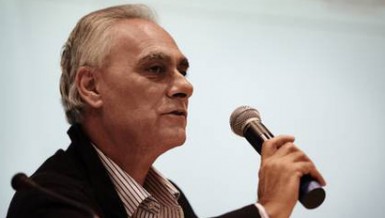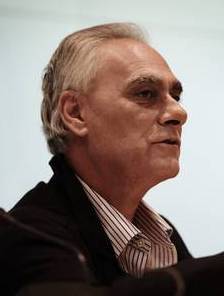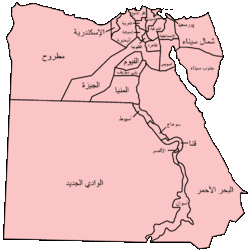
By James M. Dorsey
Iranian Supreme Leader Sayed Ali Khamenei has more to worry about in the run-up to Iran’s presidential election than ensuring that a sufficiently malleable candidate emerges as winner. Tuesday’s crucial victory in Iran’s 2014 World Cup qualifier against Lebanon raises the risk of potential celebrations turning into anti-government protests.
That risk gets extended if none of the six presidential candidates wins 50 per cent. A second round on 21 June would follow on the heels of the Iranian national team’s final qualifier against South Korea on 18 June. An Iranian victory in that game would provide Iranians two opportunities to celebrate: on match day and when the victorious team returns to Tehran shortly thereafter.
If the past is any yardstick, World Cup football victories are volatile moments in Iran. This time round, a football victory could prove to be particularly volatile. Discontent in the Islamic republic is bubbling at the service. While the elections as a result of the disqualification of former president Ali Akbar Rafsanjani, who is seen as a reformer, are less likely to provoke mass protests as they did in 2009 against a poll that was perceived to have fraudulently returned President Mahmoud Ahmadinejad to a second term in office, football could provide the spark.
The strength of a desire for change among a significant segment of the public is reflected in the emergence of Hassan Rohani, a cleric who was Iran’s chief nuclear negotiator in the early 2000s, as a reformer and potential frontrunner. The importance of sports in general and football in particular is highlighted by the fact that political interference has become an important theme in the election campaign.
Presidential candidate and former foreign minister Ali Akbar Velayati vowed in one of three televised debates among the candidates that he would ensure that sports management is shielded from interference by the government and the Revolutionary Guards by returning it to professionals. By the same token, Tehran Mayor Mohammad Baker Qalibaf, widely viewed as a conservative, prepared for his candidacy by using his municipality and its bank to sponsor clubs.
The potential of World Cup qualifiers to create opportunity for protest in Iran was demonstrated in 1997, 1998, 2002 and 2006. When Iran’s 1997 victory against Australia qualified it for the first time in two decades for the World Cup finals, public celebrations quickly turned into protests. They erupted barely a month after the election of Mohammed Khatami as president held out the promise of a less restricted society. Bahrain’s defeat of Iran four years later in a World Cup qualifier sparked mass protests against a backdrop of mounting disappointment with Mr. Khatami’s failure to implement change.
Like in 1998, women celebrated football victories in 2002 and 2006 by discarding their veils and mixing with the opposite sex. When Iran’s chances were dashed by Bahrain, rumors abounded that the match had been fixed to ensure a loss so that people would not take to the street.
An Iranian sports journalist notes that “in terms of freedom of expression, football stadiums are nearly as important as the Internet in Iran now. The protest is more secure there because the police can’t arrest thousands of people at once. State television broadcasts many matches live and the people use it as a stage for resistance. They’re showing banners to the cameras and chanting protest songs, which is why some games are broadcast without sound now.”
James M. Dorsey is a senior fellow at the S. Rajaratnam School of International Studies, co-director of the University of Würzburg’s Institute of Fan Culture, and the author of The Turbulent World of Middle East Soccer blog.



